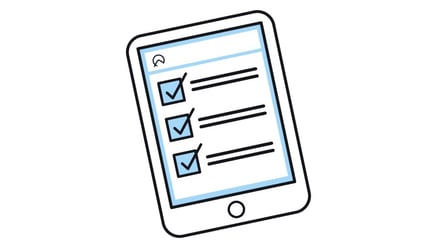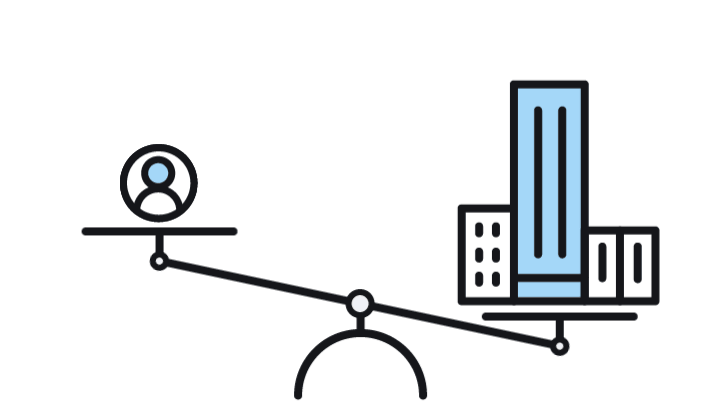How to Write a Cover Letter
/Dream_Job2.jpg?width=720&height=410&name=Dream_Job2.jpg)
Here's how to write a cover letter that won't end up in the trash. First things first, show that you can follow instructions from the get-go.
Avoid the all too common copy/paste and shun clichés. If the company requests a one-page resume, don’t give them two. If they ask for something specific, like your preferred salary range or your favorite Instagram account, make sure to include it. Missing a requested inclusion could land you in the recycling bin faster than Clippy disappeared from Microsoft Word.
After you've included the necessary info, it's time to talk about yourself. While you want to tailor your letter to each individual job, don’t just copy and paste things from the job description into your cover letter (which is oh so obvious), use your own words.
What words should you use? Not these...
5 Commonly Used Words in Cover Letters to Avoid
Shun exhausted clichés like “detail-oriented team player,” or the hiring manager’s eyes will glaze over. Here are five other words that pop up in cover letters too often.
- Believe
While it doesn’t seem very ominous in and of itself, the word “believe” displays a lack of self-confidence to potential employers, says the people in the know at Whittier College. A lack of confidence is surely something you don’t want a potential employer to think of when looking over your cover letter and/or your resume.
Similarly, you should avoid words along the lines of "feel", "should", and "hope" in favor of more definitive words. - I
It’s a small word for sure, but it’s one that speaks volumes. You can’t avoid it altogether in the cover letter, we know. But it’s placed on this list simply because it’s more than wise to limit its use in the cover letter. Of course, you can use it in your closing, but use it sparingly in the body of your cover letter.
You should avoid the overuse of the words “me” and “my” as well. Why are these tiny words such a big problem in a cover letter? You want to make the emphasis about how the employer will benefit from you. Keep the focus on the employer rather than yourself, recommend the career experts at the University of Louisiana. - Handled
Unless you’re applying for a job as a handler this is a word that often has negative connotations. Employers don’t want to hire “handlers," problem solvers, or other equally benign types of employees — they want people who take specific action and achieve equally specific results. It’s far more impressive to hear the details of the actions you’ve taken, rather than a generic description of the events. - Urge
The general tone of begging, pleading, urging, or desperation is never wise to include in a cover letter, the Work Source folks at the University of Washington warn. Once again, the focus of your cover letter should always be on the employer. Make it about what you can offer the employer and not how much you need or want the job. Enthusiasm should not be misread by the employer as desperation. - Honed
What’s wrong with this word? It’s overused.
Almost everyone who is writing cover letters these days has “honed” their skills and talents. Your goal in writing a cover letter is to stand out enough that the employer is ready to move on and test their job interview techniques on you. Saying the same thing as everyone else won’t help you to stand out. Similar words you may want to avoid include innovative, motivated, dynamic, and problem solver.
Cover Letter Structure
A cover letter is a type of professional correspondence, ergo, it should follow a specific format. Hopefully, you know the name and address of the person that you're writing to. If so, that information should be included in the header of the letter. The end of your letter should include an official closing, your name, and some contact information.
For some specific examples, take a look at this comprehensive guide posted on the Purdue University Online Writing Lab website. Here are the basics:
For your contact information, you will want to include:
- Your name
- Phone number
- Email address
- Website/Portfolio Link
- Staffing agency contact info (if applicable)
Then, you will skip a line and write the full date (month, day, year).
What You Should Include in a Cover Letter
This might go without saying, but your cover letter needs to address a few key points. Namely, state which job you're applying for, what your qualifications are, and give your contact information. You should also include a few lines that talk about why you're interested in this position, and why you think you'd be a good fit for the company.
The #1 best piece of cover letter advice is: Make. It. Personal.
Here are some things you definitely want to change in your letter:
Include: Names
Banish “Dear Sir or Madam” or “To the Hiring Manager” and all other canned greetings, says Laura McMullen from U.S. News & World Report. Find the names of people you want to talk with inside the company, or they'll think you didn’t do your homework.
And it's okay to make it really personal.
If you have a friend, acquaintance, or contact within the company, mention that person’s name up front in the cover letter, says Forbes’s Susan Adams: “Jane Smith from your communications department suggested I apply for the Graphic Designer position.” That’s pure cover letter gold — flaunt it if you’ve got it.
Include: Brevity
Keep it short.
Goldstein adds that cover letters should stay close to 200 words. Your first paragraph should have one or two active-voice sentences about who you are and your career thus far. If you can, include a short story connecting you to your target job.
Just remember that the most profound messages can be delivered in just a few words — think of the Gettysburg Address — and in this context, brevity is rewarded. The person reviewing your application may be sitting in front of a stack of 100 applications. They will not be reading every word of every cover letter. That would simply take too long. So unless you're confident in your ability to hold someone's attention with the awesome power of your cover letter, keep it short and sweet.
Include: Tangible Benefits
Put your achievements in bullet points so the employer knows what you can do for them.
For example: “I saved the company $500,000 by…” or “My social media marketing campaign garnered 17,000 likes…” or “My ad for yak wool hiking socks boosted sales by $1,000,000…” Make sure you can back your bullets with facts; employers can’t stand applicants who fudge their qualifications.
Include: A Call to Action
Take a page out of the Account Manager book and close with an appointment. Don’t just end with “I look forward to hearing from you,” and hope for the best. Cement in the Hiring Manager’s mind your intense interest in the position by ending with, “I will try to call you on Wednesday at 2:30; I hope we can talk then. Sincerely...” And make sure to keep that appointment! Even if you have to leave a voice mail, follow-up is key to conveying your reliability and interest in the job, and will make you stand out considerably from your competition.
Other Cover Letter Elements to Consider
Write fluid, beautiful sentences that are structurally varied (don't start every sentence with "I" or "The") and use creative, uncommon adjectives. Embrace your inner Copywriter.
A great way to start is beginning your cover letter with a line that no one else would write!
The first line of your cover letter should be memorable and interesting, enticing and attention grabbing. The person who reviews your application should, upon reading the first line, realize that you are a distinguished candidate who deserves special attention. If you're searching for inspiration, try perusing famous speeches. Writing a great first sentence can be hard. If you find yourself stuck on the first line, write the rest of the cover letter first, and come back to it later.
Once you've crafted your masterpiece, it's time to embrace your inner Proofreader.
There should be no typos whatsoever.
Have a friend read your cover letter to look for typos, even after you have looked over your cover letter several times yourself. Don't have any word-savvy friends? Reach out to your favorite Artisan Talent Representative and ask them to take a peek.
The Finishing Touches
Make sure to name your PDFs correctly, and consider including your resume and cover letter in one PDF or inserting the copy from your cover letter into your email application.
Need to work on your resume too? Check out our 101 to resume writing:
Bottom line? Regardless of whether you’re seeking long-term employment or short-term freelance assignments, always put the same level of effort into every cover letter you create. Just because a company is looking to hire a Web Designer or Copywriter for a one-off gig doesn’t mean that assignment won’t blossom into a lucrative relationship down the line.
If you have any questions about how Artisan Talent can help you with other cover letter hacks or to find gainful employment, contact us today to learn more.



